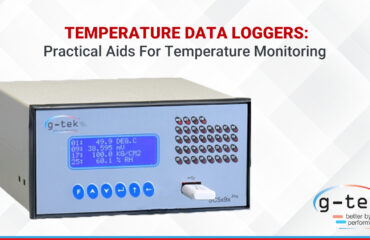Many applications require critical parameters like humidity, temperature, and pressure among others to be recorded in time with an alert system to generate alerts if the parameters exceed the required levels. They are commonly known as real-time monitoring systems. Temperature is one of the most common parameters monitored and is also known as remote temperature monitoring.
Application of Real-Time Monitoring Systems
- Temperature and humidity monitoring for refrigerators which are used for storing, medicines, vaccines, etc.
- Humidity and temperature monitoring of warehouses where temperature-sensitive products are stored like chemicals, fruits, vegetables, food, medicines, etc.
- Monitoring of temperature and humidity of walk-in freezers, cold storage, and cold rooms, where medicines, vaccines, and frozen food are stored
- Monitoring temperature of industrial freezers
- Temperature monitoring during the concrete cure process
- Pressure, temperature, and humidity monitoring in cleanrooms in manufacturing environments
- Monitoring the temperature of furnaces, kilns, autoclaves, processing machines, industrial equipment, etc.
- Humidity, temperature, and pressure monitoring of clean rooms, patient rooms, Intensive Care Units, and clinically isolated rooms among others in hospitals
- Engine conditions, humidity, and temperature monitoring of reefers, vehicles, etc. which transport temperature-sensitive goods
- Temperature monitoring with water leakage, humidity, etc. for server rooms and data centers. Server rooms need to have proper temperature monitoring as server panels generate a lot of heat
Operating method of a real-time monitoring system
A real-time monitoring system involves a lot of sensors like humidity, temperature, and pressure sensor among others. All the sensors collect data continuously at already specified intervals known as sampling intervals. The sampling intervals can range from a few seconds to hours based on the criticality of the parameter being measured. The collected data of all the sensors are continuously communicated to the central base station.
The base station transmits collected data to the internet. The base station analyzes the data continuously in case of any alerts. If any parameter exceeds fixed levels, alerts like SMS, voice call, or email will be generated to operators.
Types of real-time remote temperature monitoring systems
There are different types of monitoring systems based on the technology of the device which is being elaborated on below.
1. Ethernet-based real-time monitoring systems
The sensors are connected to Ethernet through CAT6 connectors and cables. It is similar to connecting a printer or computer. It is important to have Ethernet ports near each sensor. They can be powered with an electric plug or POE type (Power Over Ethernet). There is no separate base station required as computers in the network can become the base station.
2. WiFi-based real-time remote temperature monitoring system
No ethernet cabling is required in this type of monitoring. The communication between the base station and sensor is through WiFi routers which are used for connecting all the computers. WiFi communication needs power and if you require continuous data transmission you need to have sensors that have an AC supply.
Some devices collect data continuously and store it and transmit data only once or twice a day. These systems can work on battery for a long time because it is connected to WiFi only once or twice a day. There is no separate base station as a computer in the network can become a base station. The communication depends on the range and strength of the WiFi router.
3. Radio Frequency based real-time remote temperature monitoring system
While using a device powered by radio frequency one has to check that the frequency is approved by local authorities. The supplier has to take the approval of the device from the authorities. The device has a long range of communication from a base station. The base station is a receiver and the sensor is the transmitter. There is a continuous interaction between the base station and the sensor.
These sensors have a very low power requirement and can have a long battery life without a power supply.
4. Zigbee protocol-based real-time monitoring system
Zigbee is a modern technology that has a direct range of 1 km in the air. If obstructions come in the path the range comes down accordingly. It has a permitted frequency range in many countries. The sensors powered by Zigbee operate on low power requirements and can do without electricity as well.
5. IP sensor-based real-time monitoring system
This is an economical monitoring system. Each sensor is connected to an Ethernet port and does not require electricity. They operate on POE (Power Over Ethernet) and do not have their own memory. There is central software in one of the PC or servers in the Ethernet system. Each sensor can be configured to this software. The sensor starts working after being inserted into an Ethernet port.
At G-Tek India, there is an availability of temperature and humidity monitoring systems suitable for storage areas at affordable rates.






